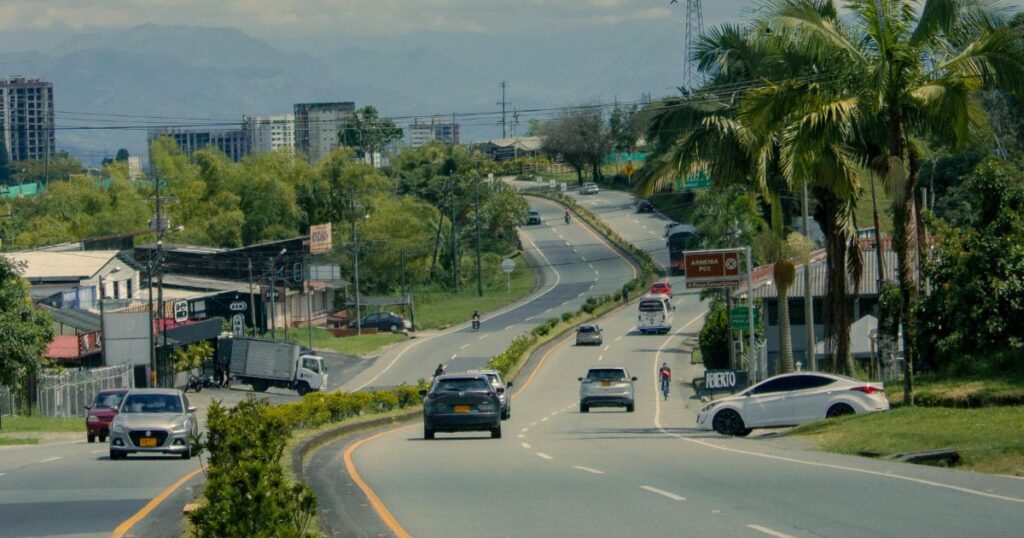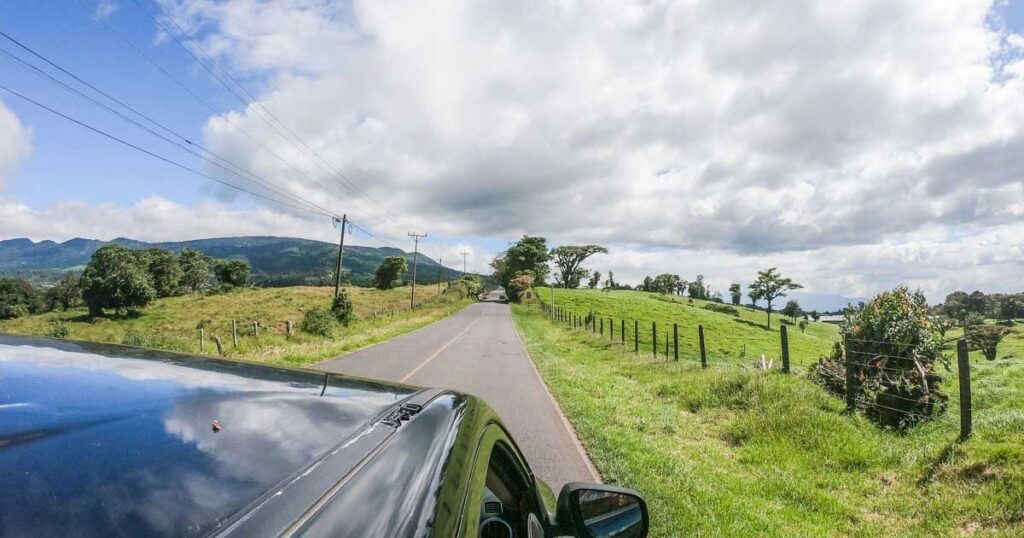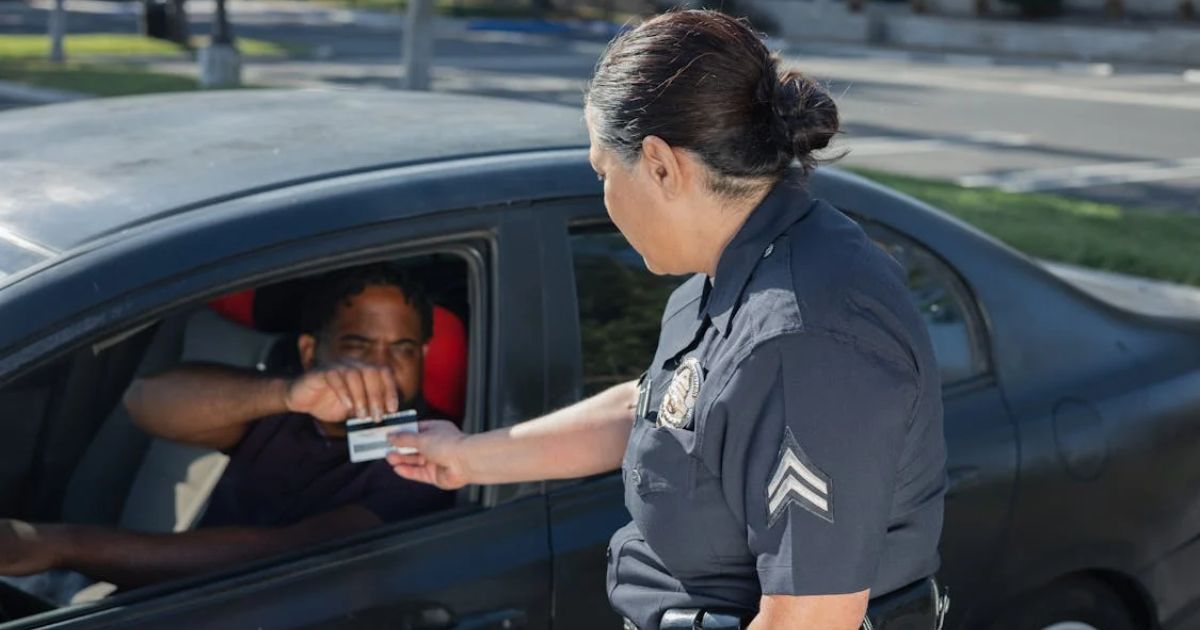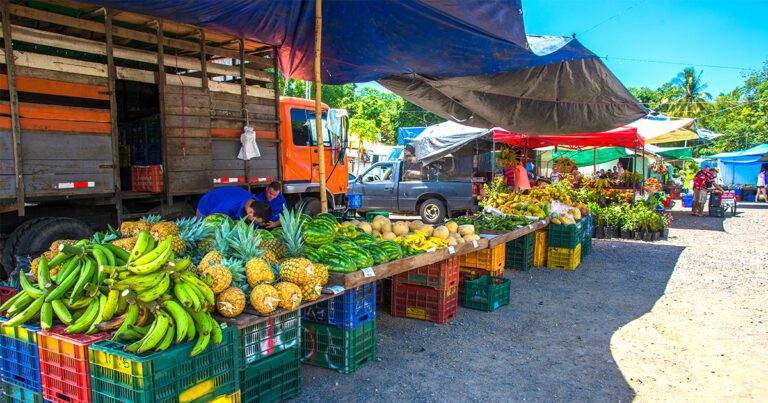Do you need an international driver’s license in Costa Rica? This question often pops up for travelers eager to explore the country’s breathtaking landscapes and vibrant culture. Driving offers a unique way to experience all that this beautiful nation has to offer. However, knowing the ins and outs of driving regulations is essential. It can save you from potential hassles during your adventures.
Your regular driver’s license from your home country is generally all you need for a short-term visit. However, that’s not the whole story. While an international driver’s license isn’t strictly required in Costa Rica, obtaining an International Driver’s Permit (IDP) can make your journey much smoother. For instance, if your native driver’s license is in a language unfamiliar to local authorities, you might face complications. An international driver’s permit acts as a helpful translation of your license into multiple languages. It’s just one of those things that makes life easier when you’re on the road.
In addition to having the right documents, understanding the requirements of both tourists and residents is crucial. Tourist drivers can use their foreign licenses for up to three months, while residents need to navigate a different set of rules. Knowing what you need can help you avoid misunderstandings and fully enjoy your time in this stunning country. So, let’s dive into the details and clarify what you need to hit the road confidently in Costa Rica.

The Role of an International Driver’s License
An International Driver’s License (IDL), formally referred to as an International Driving Permit (IDP), is the translation of information that one has on their driver’s license into multiple languages. It does not replace your actual license but is a supporting document meant to make driving easier when traveling abroad.
Key features of an international driver’s license include:
- Translation of your license into 12 key languages, which include Spanish.
- Valid in over 150 countries worldwide.
- Always recognizable as it carries your name, photo, and driver information.
In Costa Rica, tourists are allowed to drive using their driver’s license back home for up to 90 days, which is often the same period that most tourist visas are granted. There are, however, some conditions to note:
- Your license must be current and valid during your trip.
- You must carry your passport as proof of your status for tourist visas.
- The license should be clearly readable. If the license isn’t in English or Spanish, it would be best to have an international driver’s license in Costa Rica to avoid complications with local authorities.
The Benefits of Obtaining an International Driver’s License in Costa Rica
Driving in Costa Rica can be an exciting experience. While you can use your home country’s driver’s license, obtaining an International Driver’s License can enhance your trip. Here are some benefits of getting an IDL that travelers like you should consider:
Language Barrier
An international driving license includes translations of your home license. This can be helpful if you encounter local authorities or need assistance. It makes communication easier and smoother during your travels.
Peace of Mind
Having an IDL can provide extra peace of mind. If you get pulled over or need to show your license, it eliminates confusion. You can feel more secure knowing that you have a recognized document.
Easier Car Rentals
Many car rental companies prefer or even require an IDL. Having it handy can expedite the rental process. This means less time spent at the counter and more time exploring.
Valid for Multiple Countries
An IDL is often valid in multiple countries. If you plan to visit neighboring countries during your travel trip, it can be a great asset. It saves you from needing to obtain different licenses.
Insurance Benefits
Some insurance companies may require an IDL for coverage. Having one can help you navigate any accidents or damages without hassle. It’s better to be prepared than face potential challenges later.
Enhanced Credibility
An IDL can enhance your credibility as a driver. It shows that you take driving regulations seriously. This can create a more positive impression with locals and authorities alike.
Easy to Obtain
Getting an international driving license is a simple process. You can obtain it through organizations like the American Automobile Association (AAA) in the U.S. or other similar organizations in your country. The process is usually quick, and many organizations offer online services.
In a nutshell, while you can drive with your home license, an international driving license offers numerous advantages. It can ease communication, simplify rentals, and provide peace of mind. Making the effort to secure one can enhance your overall experience in Costa Rica.

How to Get an International Driver’s License for a Costa Rica Trip?
Getting an International Driver’s License for Costa Rica is a straightforward process, though it’s important to note that the correct term for this document is the International Driving Permit (IDP). If you’re planning to explore the beautiful landscapes of Costa Rica by car, having an International Driving Permit (IDP) can make your journey smoother.
Let’s break down the steps you need to follow to obtain your IDP.
- Check Your Eligibility
First, ensure you meet the requirements. You need a valid driver’s license from your home country that has been active for at least two consecutive years. If your license is in a different alphabet, such as Arabic or Mandarin, you will also need an IDP.
- Visit the Right Organization
The International Driving Permit (IDP) is typically issued by motoring organizations in your home country, such as the American Automobile Association (AAA) in the U.S. or equivalent agencies in other countries. You must obtain an IDP before arriving in Costa Rica.
- Choose Your Application Method
You can apply either in person or online. If you prefer the personal touch, make an appointment to visit the ACCR office. If you’re busy, applying online is a convenient option. Just follow the instructions on their website.
- Gather Required Documents
Prepare the necessary documents before you apply. You’ll need your original driver’s license, a valid passport, and a passport-sized photo. Keep in mind that you cannot provide copies or photos of these documents.
Ultimately, make sure to check with the issuing organization for their specific requirements.
- Complete the Application Form
Fill out the application form provided by the organization. If you’re applying in person, you can do this at their office. If online, make sure you follow the prompts carefully to ensure your details are accurate.
- Pay the Fee
The cost for an IDP typically ranges from $20 to $30 USD, depending on the issuing organization. Payment methods may vary depending on the issuing organization. Keep the receipt, as you might need it later.
- Receive Your International Driving Permit
After submitting your application and paying the fee, you’ll receive your IDP. Typically, it’s issued on the spot if you apply in person. If you applied online, make sure to follow up on the delivery process.
- Carry Both Licenses
Once you have your IDP, remember to carry both it and your original driver’s license when driving in Costa Rica. This is important for validation and to avoid any issues with rental companies or law enforcement.
That’s it! Following these steps will help ensure you have everything you need to drive legally and safely in Costa Rica. Having an international driver’s permit can make your driving experience much smoother, so don’t skip this important step while planning your trip.

Essential Requirements for Driving in Costa Rica
Driving in Costa Rica can be an exciting way to explore the stunning landscapes and vibrant culture. However, it’s important to be prepared for the unique driving conditions. Along with securing an international driving license, there are other essential requirements that travelers should consider to ensure a smooth driving experience.
Here’s what you need to know:
- Vehicle Insurance: It’s crucial to have the right insurance coverage for your vehicle. Costa Rica requires mandatory liability insurance, and having extra coverage can give you peace of mind while driving.
- Knowledge of Road Conditions: Understanding the local road conditions is key. Many roads outside the major cities can be rough, so being aware of what to expect helps in planning your trips.
- Vehicle Type: Depending on where you are traveling, a 4×4 or high-clearance vehicle may be necessary. Some rural areas have rough roads, and a suitable vehicle will make your journey much easier.
- Emergency Kit: Always have an emergency kit in your car. Include items like a spare tire, first aid supplies, and basic tools. You never know when you might need them.
- Navigation Tools: GPS or a reliable navigation app like Waze is essential. Since Costa Rica’s addresses can be confusing, having a good navigation tool helps you find your way.
- Local Traffic Laws Familiarity: Familiarize yourself with local traffic laws. For example, driving is on the right side of the road, and there are specific speed limits. In Costa Rica, speed limits are typically 60-80 km/h on rural roads and 40-60 km/h in urban areas. Knowing these can prevent misunderstandings.
- Caution for Animals and Pedestrians: Be prepared for unexpected encounters with animals or pedestrians on the road. This is common, particularly on rural roads, so staying alert is vital.
- Defensive Driving Skills: Practicing defensive driving is essential. Conditions can be unpredictable, so being cautious helps to avoid potential accidents.
- Patience and Flexibility: Finally, patience is key. Traffic can be slow in some areas, and road conditions can change unexpectedly. Being flexible with your travel plans will make the experience more enjoyable.
With these requirements in mind, you can navigate Costa Rica with more confidence. Being prepared not only enhances your driving experience but also lets you fully enjoy the beautiful sights along the way.
Traffic Laws and Driving Tips in Costa Rica
Costa Rica is a beautiful country, having tropical landscapes, pristine beaches, and adventurous outdoor activities for several tourists. To some, having an international driver’s license and a rental car remains one of the best ways to access this tropical paradise. With this in mind, an understanding of traffic laws and regulations is vital before traveling.
Knowing the rules prevents fines, safety, and navigating the roads like an insider in Costa Rica. Here are things to know about driving and traffic in Costa Rica:
Driving Side
Costa Rica drives on the right side, similar to many other countries in the world. Visitors from countries that drive on the left side of the road should be very careful when adjusting to the opposite flow of traffic. When passing another vehicle, move to the left side of the road. However, always watch out for oncoming traffic and follow road signs to determine if overtaking is allowed.
Speed Limits
Costa Rica posts speed limits in kilometers per hour (km/h) and depends on the road type and the area through which you are driving. It is therefore important to watch out for speed limit signs and lower your speed to avoid getting fined as well as secure your safety:
- Urban Areas (Cities and Towns): Speed limits in urban areas are typically 40 km/h (25 mph), while on rural roads, it ranges from 60 km/h (37 mph) to 80 km/h (50 mph). Be very careful where there are many pedestrians, such as near schools, markets, or parks.
- Highways: Generally, the speed limit along highways and major roads is in the range of 80 to 100 km/h (50 to 62 mph). However, it is always best to be aware of the varying signs that may indicate a shift in the speed limit either because of road conditions or under construction.
- School Zones: This zone includes the school’s speed limits, strictly set at 25km/h (15mph). There is usually a speed hump here with road police who enforce compliance. Overspending here can cost a pretty penny, as officials do not treat offenses lightly.
Drinking Driving Laws
Drunk driving in Costa Rica is taken seriously, as drunk driving laws are enforced rigorously. It is illegal to drive under the influence of alcohol or narcotics. The legal blood alcohol content (BAC) limit is 0.05%. Some places may have slightly different BAC limits, but 0.05% is the standard.
Use of Cell Phones
In Costa Rica, using a mobile phone while driving is highly prohibited unless you have a hands-free device. Talking on the phone, texting, or using apps is not allowed while driving. Distracted driving is dangerous and a serious offense and authorities strictly enforce this rule.
- Hands-Free Devices: If you want to call while driving, you have to use a hands-free device. This is either a Bluetooth device or a car system that allows you to talk without holding the phone.
- Fines for Violations: If you use a mobile phone without a hands-free device can lead to fines of approximately $200.
Frequent Traffic Fines
The traffic fines in Costa Rica can be pretty huge in certain cases, especially with respect to offenses that raise serious safety concerns. Following is a list of frequent violations along with their respective fines:
- Running Red Lights: Fines for running red lights range from ₡342,000 ($600), depending on the severity and location of the offense.
- Speeding: Fines for speeding vary depending on how much you exceed the speed limit, ranging from ₡54,000 to ₡222,000 ($100-$200).
- Illegal Parking: Parking in restricted areas or obstructing traffic can result in fines between ₡23,000 to ₡50,000 ($40–$90). Additionally, your vehicle may be towed, incurring additional fees.

Navigating Costa Rican Roads
Driving in Costa Rica is exhilarating and challenging, as road conditions there differ according to the location and region. Everything from six-lane highways to dirt roads makes sure you’re prepared for every road type you drive on during your trip. Whether you’re going to crowded tourist places or exploring the heart of the rainforest, knowing what you are going to get from the roads will help you have a smoother ride and enjoy the experience better.
Types of Roads in Costa Rica
The three major types of roads that characterize the road system of Costa Rica include paved roads, gravel roads, and rural dirt roads.
- Paved Roads: These roads are the most common to be found around major cities and tourist areas. Paved roads can also develop potholes, however, so it is very important to stay alert.
- Gravel Roads: In smaller communities, gravel roads are common; most people go along them to see small towns, national parks, and other eco-tourism attractions. While most any vehicle can navigate gravel roads, it can be tiresome and even slippery during rain showers as the ground tends to be bumpy.
- Rural Dirt Roads: In the most remote areas, especially if you’re going into rainforests or accessing secluded beaches, dirt roads are common. These roads are less maintained and can be quite challenging to navigate, especially after heavy rain. A 4×4 vehicle is recommended for these roads.
Challenges of Driving in the Rainy Season
The rainy season in Costa Rica, usually from May to November, is the time of year when road conditions may be adversely affected. Driving during rainstorms can become tricky, especially on unpaved roads.
- Mud and Flooding: Heavy rain can turn dirt and gravel roads into muddy, impassable roads; sometimes, flooding in low-lying areas makes necessary detours or even road closures.
- Slippery surfaces: When the rain falls on poor roads, the soil is slippery, and one may lose grip. When it rains, always slow down and maintain a safe distance from other vehicles.
- Reduced Visibility: When it is raining, one cannot see properly. Hence, headlights must be turned on and speed reduced. Some roads may get flooded in the rain, and bridges are unsafe, so always heed local advice or road signs.
Considerations for Road Conditions in Costa Rica
During the rainy period, road conditions in Costa Rica change dramatically due to the persistent and heavy rainfall over many periods. Landslides block roads for hours, even for several days, in mountain areas because of the heavy flooding that lasts for many months. Drivers are advised to be cautious and check the weather forecast if it is likely to rain.
Urban and main highways have clear signage, but rural and other remote locations often lack adequate road signs. Existing signs can be worn out, covered by bushes, or installed in poor visibility locations. Lane markings may also be faint or completely missing on older roads or in poorly maintained regions. It’s highly recommended to use GPS or detailed maps and remain vigilant to not miss critical turns or cautions.
Outside of major cities, there is virtually no street lighting, and roads tend to be dimly lit. Potholes or other debris along the road can be hidden from view, and lane lines are often nonexistent, all of which makes nighttime driving precarious. If you are an unfamiliar driver in the country, it would be extremely wise to avoid nighttime driving whenever possible and only do it if unavoidable.
Costa Rican roads typically pass through farms, forests, and near national parks so that wildlife and livestock can always be expected. Cows, horses, or chickens are not unusual on dirt roads in rural areas or towns. Animals may cross the road abruptly, so be careful to drive cautiously, especially in rural or less developed areas. In case of an accident, your car might get damaged, and the animal gets injured. Expect potential delays in reaching your destination due to roadblocks or the need to handle these encounters.
Hidden Gems to Explore in Costa Rica: Where to Go with Your Rental Car
One of the most wonderful experiences in driving in Costa Rica is being able to discover those hidden treasures that most tourists miss. With a rented car, you get to enjoy charming roadside attractions, untouched natural wonders, and local eateries that lie off the beaten path. Whether it is some secluded waterfall hidden in a remote rainforest or mountains, there are boundless surprises along the highway of Costa Rica.
Let’s dig into some of the best secrets Costa Rica has in store for visitors:
Arenal Volcano and La Fortuna
Arenal Volcano is one of the most famous landmarks in Costa Rica, and the town of La Fortuna, directly below the volcano, is a great place to be if you are interested in going hiking through the rainforest or just want to soak in the natural hot springs. The views during the drive are pretty beautiful, with lush green forests and even a view of the peak of the volcano on clear days.
The trip to Arenal is about more than just getting somewhere; it’s a trip in itself. On the route through Costa Rica, you’ll find wildlife, waterfalls, and quaint little villages. La Fortuna allows easy access to the fabled La Fortuna Waterfall and the Arenal Hanging Bridges.
Manuel Antonio National Park
Manuel Antonio is among the most visited national parks in Costa Rica, with its wonderful combination of beaches and wild animals. The 2.5-3 hour drive from San José takes you along scenic coastal roads that offer breathtaking views of the Pacific Ocean. From there, you can explore the trails in the park, view monkeys and sloths, and spend the day relaxing on the pristine beaches.
Manuel Antonio National Park is highly popular for its wealth of biodiversity. The scenic coastal drive going there, however, should not be missed. Drive through small beach towns and easily stop anywhere to enjoy freshly caught seafood or simply take a sea dip. There’s definitely going to be something that comes your way, whether you are an animal enthusiast or a fan of the beach.
Tamarindo Beach
For those who love the sun, surf, and a laid-back atmosphere, Tamarindo is the place to be. Situated on the Pacific coast of Costa Rica, Tamarindo offers some of the best surf spots, and has a lively nightlife with plentiful restaurants and bars. Getting here from San José isn’t easy, though– it takes about 4 to 5 hours through rolling hills, dry forests, and stunning views along the coast.
Monteverde Cloud Forest
Amongst the cloud forests of the world, Monteverde Cloud Forest stands out as one of the most famous ones. Situated within a few hours’ travel from San José, the misty landscape is what attracts nature lovers; for a glimpse of rare species, there is quetzal. The ride through this place can be rough and tough, but it will pay off with the scenery that follows the route.
The journey to Monteverde takes you through lush rainforests and mist-filled cloud forests. Roads could be quite challenging, but once you arrive, breathtaking views and the chance to explore one of the most unique ecosystems on Earth. Monteverde must be visited by lovers of bird watching, hiking, and being surrounded by nature.
Corcovado National Park
Corcovado National Park is often described as one of the most biodiverse places on Earth, located on the Osa Peninsula. The park is a veritable jewel for wildlife enthusiasts: jaguars, tapirs, and macaws are only a few of its species. The 5-6 hour drive from San José will take you through some of Costa Rica’s most remote, almost untouched areas, giving you the feel of being in an environment that is still pristine, very rare for the country.
Although the drive to Corcovado can be long and challenging, it leads to one of the most extraordinary natural reserves in the world. You will find chances to experience the thickest rainforests, virgin beaches, and rare ecosystems that hold some of the world’s most exquisite and rare wildlife. It makes a journey across the unlikeliest remote villages and treacherous roads well worth it.
Frequently Asked Questions
To make things easier, we have put together a list of frequently asked questions that will help clarify the requirements and ensure you’re ready for the road.
What’s the difference between an IDL and a regular driver’s license?
An International Driver’s License, simply put, is not actually a driving license by itself but rather a translation of the original driver’s license in one or more languages. It is valid only when carried with your original driver’s license, which means it cannot be used on its own.
How long is an IDL good for?
An IDL is valid for one year from the date of issue. You have to renew it before traveling to Costa Rica or another country when your IDL expires. Always ensure that you check the date of expiration so that you will not face a problem in hiring a car or driving in the foreign country that you will visit.
Do I need to get an IDL if I’m visiting for a short time?
If your driver’s license is either English or Spanish, then an IDL is not required. However, if your license is in another language, such as Japanese, Russian, or any other non-Spanish/English language, having an IDL, more accurately referred to as an International Driving Permit (IDP), becomes important in order to avoid complications.
What documents are required to rent a car in Costa Rica?
You will require a valid driver’s license from your home country (in English or Spanish), a credit card, and proof of insurance. An IDL is not mandatory unless your license is not in English or Spanish.
Can I use my IDL for other countries in Central America?
Yes, an IDL is widely accepted in most of Central America, including Nicaragua, Panama, and Honduras, among many others. However, the requirements need to be checked for each country because the acceptance of IDL varies country by country. It is also good to carry your original driver’s license in case the IDL may be questioned or further clarification may be needed.
Do I need to take a test to obtain an IDL?
No, you do not need to take a test to obtain an International Driving License (IDL) or International Driving Permit (IDP). The application process typically only requires you to submit your valid driver’s license and fill out the necessary forms. This makes it a straightforward process for those who are already licensed drivers.
What is the difference between an International Driving Permit and an International Driver’s License?
The International Driving Permit (IDP) is an official document that translates your home country’s driver’s license into multiple languages, enabling you to drive in foreign countries. In contrast, the term “International Driver’s License” is often misused, as it technically refers to the IDP. The IDP serves as an interpretation of your valid driver’s license rather than a standalone license.
Do I need a photo for my International Driving Permit application?
Yes, you typically need to provide a photo for your International Driving Permit application. The IDP includes your passport-sized photo, along with your personal details and driving credentials. It’s important to check the specific photo requirements of the issuing authority, as they may vary.
How long does it take to receive my International Driving License after applying?
The processing time for an International Driving Permit can vary depending on the issuing organization, but it generally takes anywhere from a few days to a couple of weeks. It’s highly advisable to apply well in advance of your travel to ensure you receive it on time. Some organizations may offer expedited services for an additional fee.
Are there any restrictions on the types of vehicles I can drive with an IDP in Costa Rica?
With an International Driving Permit, you can drive any vehicle class that your home country’s driver’s license allows. However, it’s always important to check with local regulations and the rental car company regarding any specific vehicle restrictions. Certain high-powered or specialized vehicles may have different requirements.
Can I apply for an IDL online?
Yes, you can apply for an International Driving License (or, more accurately, an International Driving Permit) online through authorized agencies, such as automobile associations. The online application process generally involves filling out a form, submitting a copy of your driver’s license, and providing a passport-sized photo. Always ensure you are using a reputable source to avoid scams.
Do You Need an International Driver’s License in Costa Rica: Final Thoughts
Ultimately, while the question of do you need an international driver’s license in Costa Rica may seem pressing, it really comes down to your unique situation.
If your home country’s driver’s license is in English, you’re generally fine driving without an International Driver’s License (or, more accurately, an International Driving Permit). However, having an IDP can be a smart choice, especially if you want to avoid any potential language barriers with local authorities. It offers a translation of your license in multiple languages, making it easier for you to navigate the roads.
Driving in Costa Rica can be a rewarding experience. The freedom to explore Costa Rica at your own pace is unmatched. You can visit stunning beaches, lush jungles, and charming towns without worrying about bus schedules. Just remember to keep your passport and proof of valid entry handy, along with your driver’s license. These documents are essential for a smooth driving experience.
If you decide to rent a car for your adventures, consider Budget Costa Rica. We offer a variety of vehicles suited for different needs and budgets. With a reliable car, you can truly make the most of your time in this amazing destination. So, before you set off, think about your documents carefully.







